A Short History of the Dragon Class
In 1905 Johan Anker, in partnership with Christian Jensen, formed the Norwegian boatyard of Anker and Jensen. These were auspicious times for international yacht racing with increasing numbers of people becoming interested in sailing small fast craft of new designs. In 1906 the International Yacht Racing Union was founded with the sport rapidly expanding internationally. In 1908 Johan Anker helmed the 8-metre “Fram” in the Olympics held on the Solent, in which he was third in 2 races. The 1911 Coronation Regatta saw Anker on the Solent again with the 12-metre “Rollo”. This time he returned home with the Gold medal after winning both races.
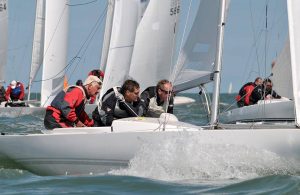
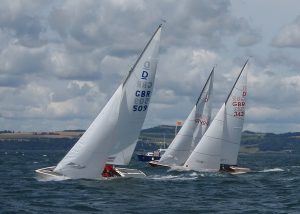
His position was now established as a yacht designer of flair and quality and in 1927 he produced a design that won a competition organized by the Royal Gothenburg Yacht Club. The aim of the competition was to produce a smaller, less expensive boat for younger people. Anker designed a Bermudan rigged keelboat with long overhangs , a coachroof, cabin, doors and rudimentary accommodation so that the boat could be lived on in a Spartan way and sailed from one regatta to the next or used for cruising. The name of the design was, of course , the Dragon and the first was built in 1928. The dimensions were, and remain, LOA 8.9m, LWL 5.7m, beam 2.0m and draught 1.2m with a total overall weight of 1,700 kg. The boat fitted within the 20 sq. metre Rule and many early Dragons carried a 20 on their sails. The Dragon quickly became very popular and spread throughout the Scandinavian countries , soon reaching Germany and Britain.
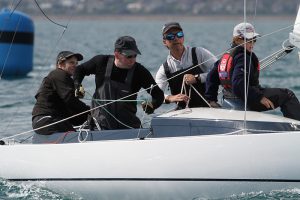
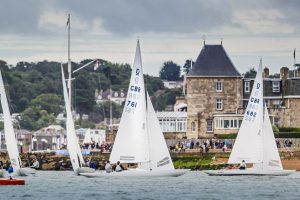
The Dragon’s success and rapid growth led to it being selected as an Olympic class in 1948. Rather sadly this meant that the Dragon could no longer easily be a weekend cruiser/racer. The long cabin top, doors and accommodation were stripped out and the rig was made more powerful by the addition of a genoa and a spinnaker. The prominence that Olympic status involved also led to the involvement of many top helmsmen and an arms race in which many owners replaced their boats frequently as builders sought to exploit the rules. In 1962 the International Dragon Association was formed at a memorable party given by the Norwegians at Hanko. This followed preliminary discussions at the Gold Cup on the Clyde in 1961. At the same time the IYRU agreed to accept submissions for rule changes direct from International Class Associations and as a result the Class Rules were considerably tightened up.
About 100 boat builders have tried their hand at the Dragon, principally in its earlier, wooden, days. The class owes a particular debt to Borresen who managed the construction transition from wood to GRP immaculately so that both constructions competed, and still do, on equal terms. Other builders who were particularly successful internationally with wooden boats include Anker and Jensen themselves, Pedersen and Thuesen, Abeking and Rasmussen, Bjarne Aas and Savell. In Britain, the major builders have been Nunn Bros, Camper and Nicholson, Lallows and Woodnutt. Since the introduction of GRP construction Petticrows have taken the lead from Borresen as the major builder in the class, followed by such as Doomernik and Vejle Yacht Services. During the 1980s Peter Wilson also built a number of GRP boats.The competition among builders, sailmakers and sailors has meant that equipment has been continuously improved so that a modern Dragon is now one of the most sophisticated racing boats to be found.
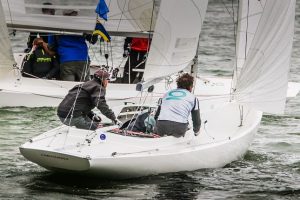
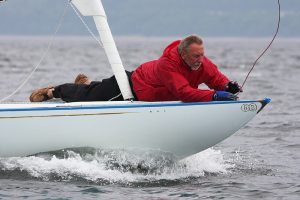
A snapshot of the class today reveals about 1,400 boats worldwide registered to National Dragon class associations in 30 countries, though there is no doubt that many more older boats are still sailing. Between 35 and 50 of these long-lived boats are built each year. The class’s major international championships and regattas have fleets of between 60 and 100 boats and many national events see 40 boats on the line. Participation ranges from a large number of Olympic medallists and World champions through to club sailors, all of whom are characterised by their affection for the boats. Now that the class permits a crew of three or four the exigencies of a weight limit are much less severe, which also enables wider participation. The strengths of the class remain the beauty and attraction of the boats, the possibility of competing at almost any level and the sheer internationalism and camaraderie of all involved.
The Dragon in Britain
In 1933 A.H.Ball, a member of the Clyde Yacht Club, was on a cruising holiday in Scandinavia, where he was much taken with the design of the Dragon. He returned from his holiday with a copy of the plans and the idea of establishing a class caught on. The first Dragon to come to Britain was Anita in 1936, owned by J.Howden Hume. The same year McGruer built 9 Dragons at Clynder and regular class racing began with 14 boats, including an international regatta won by a Swedish boat. As a result of this success the Clyde Yacht Clubs Conference presented the Dragon Gold Cup, first raced for in 1937 which remains one of the most important international competitions in the class.
By 1938 there were 25 Dragons racing regularly on the Clyde and the class was spreading to other locations as well, notably Belfast, Burnham-on-Crouch and the Solent. At the outbreak of war there were 120 Dragons registered in Britain, initially with the Clyde Yacht Clubs Conference and from 1946 with the RYA.
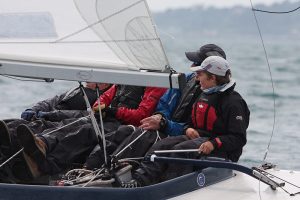
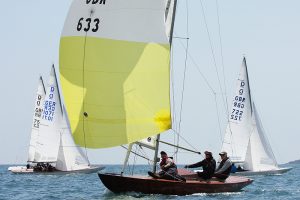
After the war, the class grew rapidly in Britain, helped by its Olympic status. In 1948 the Island Sailing Club gave the Dragon “Bluebottle” to Princess Elizabeth and the Duke of Edinburgh as a wedding present. A year later the Duke presented the Edinburgh Cup as a perpetual trophy for the winner of the national championship. This royal involvement, with ”Bluebottle” competing at many regattas undoubtedly gave the class a higher profile.
Over the years British helmsmen have won the Gold Cup four times, the World Championship once and the European Championship twice as well as winning a bronze medal in the Melbourne Olympic Games. The class’s international organization has always had a strong British flavour, helped by the language, from the days of Sir Gordon Smith as the first head of the IDA to the present chairman. Britain also currently has the largest builder in the world in Petticrows, based at Burnham-on-Crouch.
Fleets are currently to be found across the country including; Aldeburgh, Burnham, Medway, the Solent and more with many other boats participating in regattas both in Britain and overseas.
